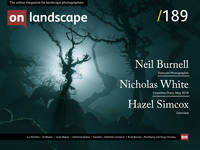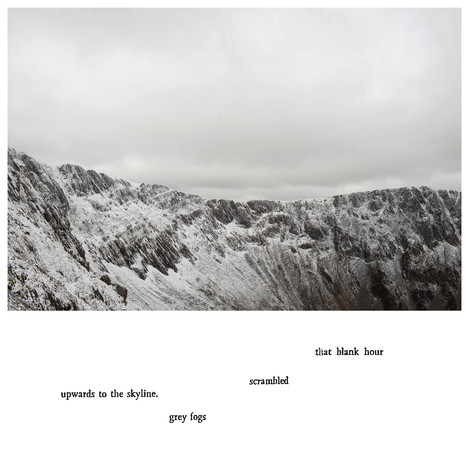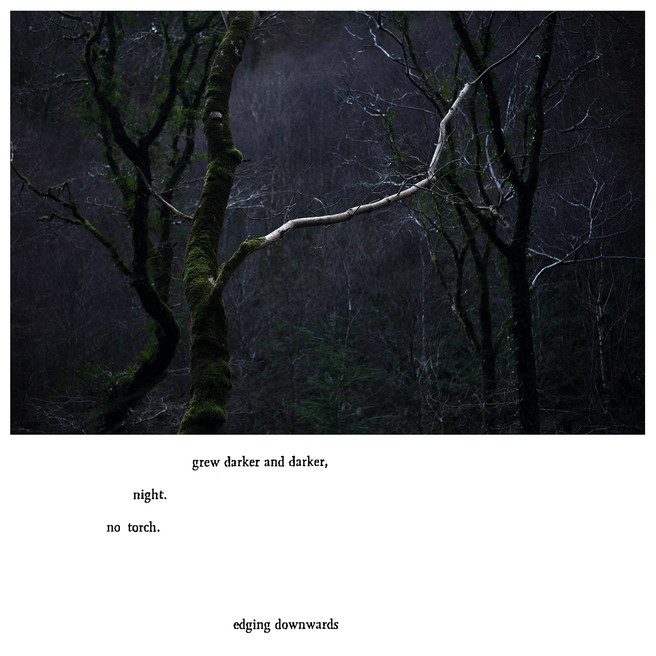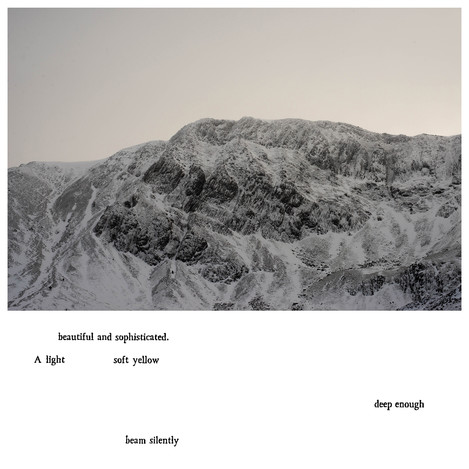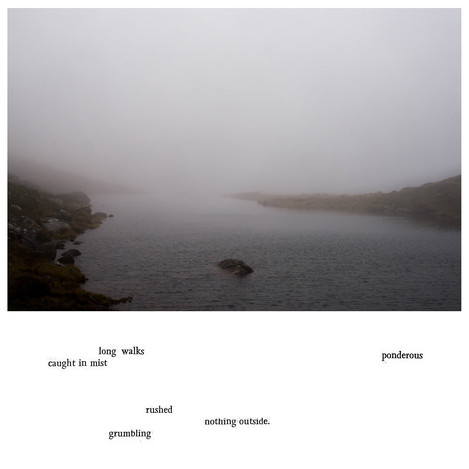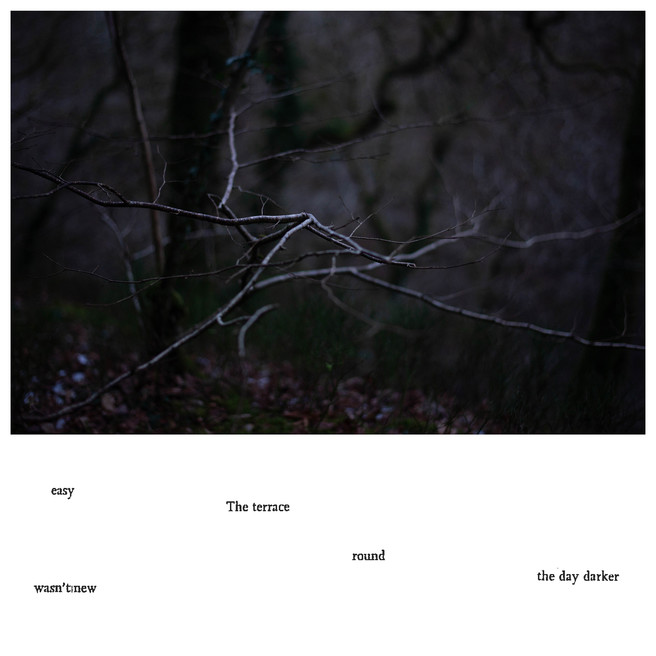A photography project inspired by the first woman mountain guide & her book ‘Space Below My Feet’

Hazel Simcox
My most recent practice focuses on the environment and the individual experience of engaging with a rural landscape. My photography translates my experience of walking. The contents of my bookcase have become my mountain guide. I react to the voices of these explorers, through bringing together my photographic imagery and the re-appropriation of literature. I am a recent participant in the East Meets West Photography Masterclasses, organised by GRAIN and Format Festival. Through this experience, my project ‘Space ----- My ----‘ was developed and recently exhibited as part of Format Festival. Alongside, I am a full-time lecturer at North Warwickshire and Hinckley College, and a passionate researcher and writer. I am a regular contributor to the online magazine Photomonitor.

Charlotte Parkin
Head of Marketing & Sub Editor for On Landscape. Dabble in digital photography, open water swimmer, cooking buff & yogi.
I've taken up climbing in the past 2 years, so when Hazel sent some information over about her recent project which was inspired by Gwen Moffat the first woman mountain guide and her book ‘Space Below My Feet', I was intrigued. After an email conversation, I was delighted that Hazel agreed to an interview about her project and she talks about how she approached visiting these locations and creating her own experiences based on the stories from the book.
You studied a BA (Hons) Photography at Blackpool and the Fylde College (2006-2009) and undertook a MLitt History of Photography at St Andrews University (2012-2013). Tell us about how you chose this as a study path/possible career and how this shaped your approach to photography.
During high school I became interested in photography and built a darkroom in the loft at my parents' home. I quickly chose this as a pathway as I was fascinated by the power of photography. White balance blew me away! I later progressed to the local FE college to start my studying and soon was trapped in the journey.
Education allowed me to explore both the practical and theoretical aspects of photography and gave me a positive grounding. I am very thankful to every tutor I have had for their advice and direction. It also led me to develop a complex relationship with photography, through questioning the purpose and motive in image making. This fuelled my interest into the history of Photography but left a significant time gap in my portfolio of work. Only recently have I re-ignited my practice; this time I have ownership of it.
You are a lecturer currently teaching across a range of levels at North Warwickshire and Hinckley College, including delivering on the BA (Hons) Visual Media, in affiliation with Coventry University. You obviously lecture in different formats of visual media, so what drew you to landscape photography rather than other media or genres?
How do the other genres/approaches to photography inform your landscape work?
I feel like I react to the landscape in a similar style to a street photographer. I like to capture as I go. My greatest inspiration comes from literature. I always have a book about the environment on the go, and this fuels my energy to get out and explore. I am currently reading Robert MacFarlane’s Underland, and can already see my photographs are seeking out shelter and darker areas!
Tell me about the photographers or artists that inspire you the most. What stimulated your interest in photography and who drove you forward, directly or indirectly, as you developed?
I must give a great level of credit to Thomas Joshua Cooper. I was lucky enough to meet Thomas and see his studio space whilst I was studying in Scotland. I interviewed him for a paper I was writing on The Philosophy of Time in Photography. We discussed the concept of time, specifically human experience of time, in his own photographic practice. It is only recently that I have looked back on this meeting and realised its significance. Thomas’s approach to his subject reminded me of how important it is to take the photos instinctively, void of external influence.
Your previous work has fallen into two key themes; social limitations and expectations, and the function of man-made spaces. Was this by design or accidental? Tell us more about these two key themes and why they are important to your photography and narrative.
I identified these two themes when I was trying to categorise the bodies of work I have created for my current website. I am forever questioning the purpose and actions of mankind. I use photography to understand the world around me and as a tool to question. Recently this has been focused on the environment, and how this environment has an emotional and mental influence. Previously I have explored childhood and the way society impacts on individuality. In many ways, all these themes both seek a comprehension of how we can be most true to ourselves.
Your work is mostly project based with a number of different projects displayed on your website. How have you gone about forming, researching, working and finishing a project? (Big question, sorry!)
I don’t always create my photographs for a series, but I do like to share them in collections. I keep my Instagram account much looser and more of a visual journal. I feel a series helps present a narrative. John Blakemore describes images being choreographed. Each move works alone, but when they are put together, they can have a much greater impact. Although weak choreography is also a risk!
Is there a part of the process in a photography project that you like the most? If so what is it and why?
Yes, I like to be out in the environment. I like the moment before I take the photograph the most. The imagining of it. Sometimes I wish I didn’t have to press the shutter.
Tell us about your current project ‘SPACE ----- MY ——‘ which was inspired by Gwen Moffat the first woman mountain guide and her book ‘Space Below My Feet’, first published in 1961.” How did you find out about her? What inspired you to do a project based on the book?
I found Gwen’s book in a book barn, just by chance. I like to go there because they do a great cake and have a roaring fire in the winter! I hadn’t heard of her before. I started reading it, and so did my husband Dan. She had been to so many of the locations we love to visit. We started discussing her when we visited these places. It wasn’t until later that I realised the connection between my images and her texts and began producing the outcomes for ‘Space ----- My ----.’
How did you go about researching the locations and which places to visit?
The places she went to are the places we naturally end up going so I haven't had to research or specifically target anywhere. Although, I have been known to enjoy hours crawling around the OS Map hunting for names of places in her book. The exact location is not of utmost importance. I have spent some time trying to work out where her cottage near Dolgellau is without any success, but every time we see a derelict building in the area, we joke that its Gwen’s house. I prefer it this way, not knowing! Our next trip is to the Isle of Skye, another one of her stomping grounds.
You say about the project “Through delving into their personal encounters they encourage me to visit the landscape and create my own experience.” How did you go about this? Did you take the book on the trips and think about Gwen’s narrative and reflect on that?
Absolutely. There is always a book in my bag. Gwen, Robert MacFarlane, Nan Shepard, just to name a few. The links are never literal, just dancing away in the background. Gwen also wrote murder mysteries; I find these equally interesting. The way she writes has enabled me to see a more human side to her character; she likes a good gossip, or the village people in her books do!
I love your “What would Gwen do?” approach to life experiences. Please tell us about a couple of “What would Gwen do?” moments.
Mostly they involve me in tears! These environments that we go to explore deliver both mental and physical challenges. Edmund Burke’s theory on the ‘sublime’ scaffolds the project; the notion that romantic grandeur, intertwined with horror and terror, is never far away. The ‘Gwen’ moments can start fifteen minutes into the walk; this for me is always the hardest part when I remember it's going to be hard work. As my legs and lungs scream, I visualise Gwen stomping her way up, without stopping. Then when the routes get tough and I question if I can do a move on a climb, Dan shouts to me ‘Could Gwen do it?’ I imagine Gwen leading her way up the same bit of rock, and re-focus.
How do you approach the post processing of your work?
Bringing together the images and the text is my second favourite part of the process. I print out the images and I photocopy out the pages from the book, I spread it all out over the table and simultaneously delve back into the walk and literature. I revisit the pages and redact the words that don’t match my own experience of the walk, leaving behind the words that I share with Gwen. I initially used Tippex, but I was getting through too much, so I now circle the words and do a digital redaction afterwards. I have made a little paper frame that I use to select a fragment from the page. The image that syncs up with the text tends to reveal themselves without much thought.
Tell me what your favourite two or three photographs from the project are and a little bit about them.
Half-hearing the conversation
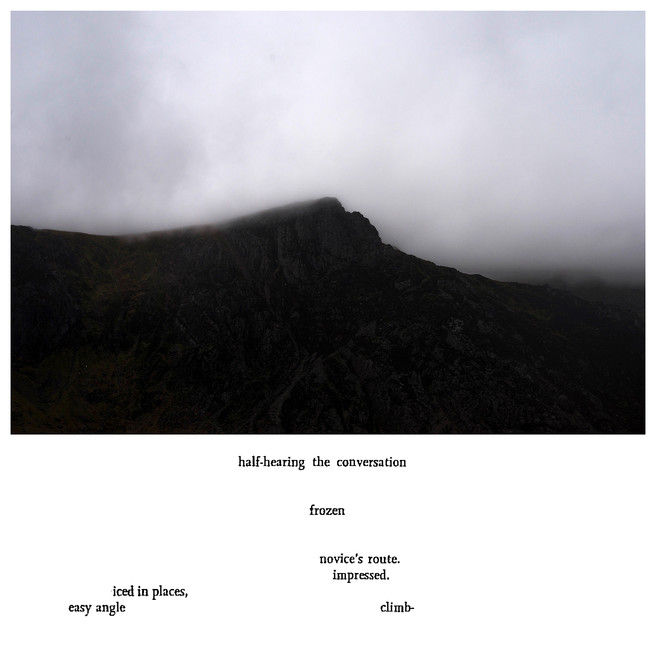
Very early on in Gwen’s book, she speaks of ‘Ordinary Route’, one of her first climbs in the Ogwen Valley, Snowdonia. She didn’t seem particularly taken by it, describing it more like walking than climbing. This would usually put me and my husband, Dan, off, but as my first wet, winter climb it became a whole new challenge! This image was created towards the end of the day following the climb. The route descended to the same area as the approach. Looking back up at the route we had just climbed, and seeing the clouds rolling in, I feel this image has captured all of my fear, elation and cold fingers! I did laugh as I redacted the text and found the phrase ‘hearing half the conversation’. This was such a true statement from the day, as Dan had led the way, and the wind and valley echo had prevented our communication!
Bewildered
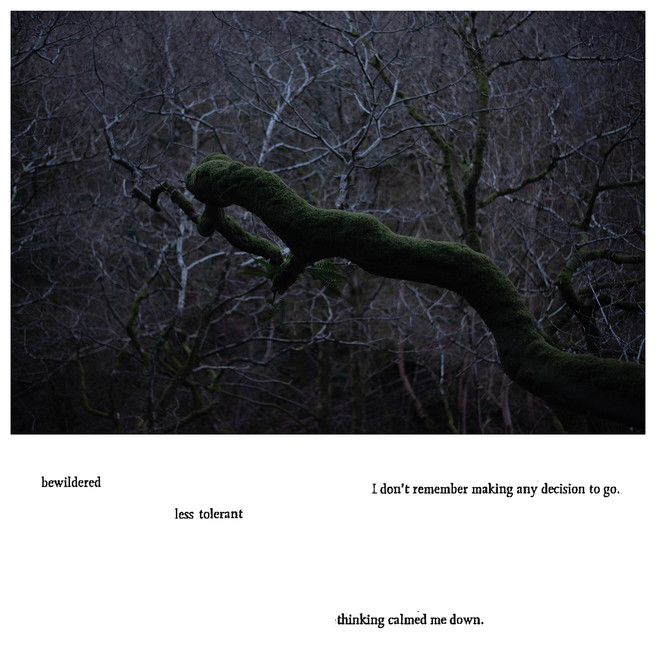
Gwen walks at night, the dark does not deter. I have been terrified of ending up walking or climbing after sunset and can often get fixated on needing to be back at the car well before dark is on us. This winter I have made a conscientious effort to address this fear and have found the beauty of dusk almost an addiction. It’s amazing how our eyes adapt. After a walk up Cadair with Dan, we returned to my Dad’s house, in a nearby village, just before dusk. Dad was just leaving to take the dog out for a walk, so I said I would go to the edge of the forest to get a few images; an hour later I was still walking. The phrase ‘I don’t remember making any decision to go’, alongside the other three phrases, summarises this walk perfectly!
What is next for you? Are there any other projects, another exhibition or are you focusing on your teaching?
In the summer, the tables will turn as I become a student at Dartmoor Summer School of Photography. I have the origins of many projects fluttering around and hope this experience will help me focus in on my approach. Trees seem to be screaming at me for some attention!
The North Wales Project, of which I am grateful to be a member of, are collectively exhibiting at The Northern Eye Festival in October this year. As a collective, we aim to raise the voice of documentary photography in North Wales.
A significant proportion of my practice is created in Snowdonia. I hope my work will bring a comment about the rural environment into a genre that predominantly focuses on the streets.

